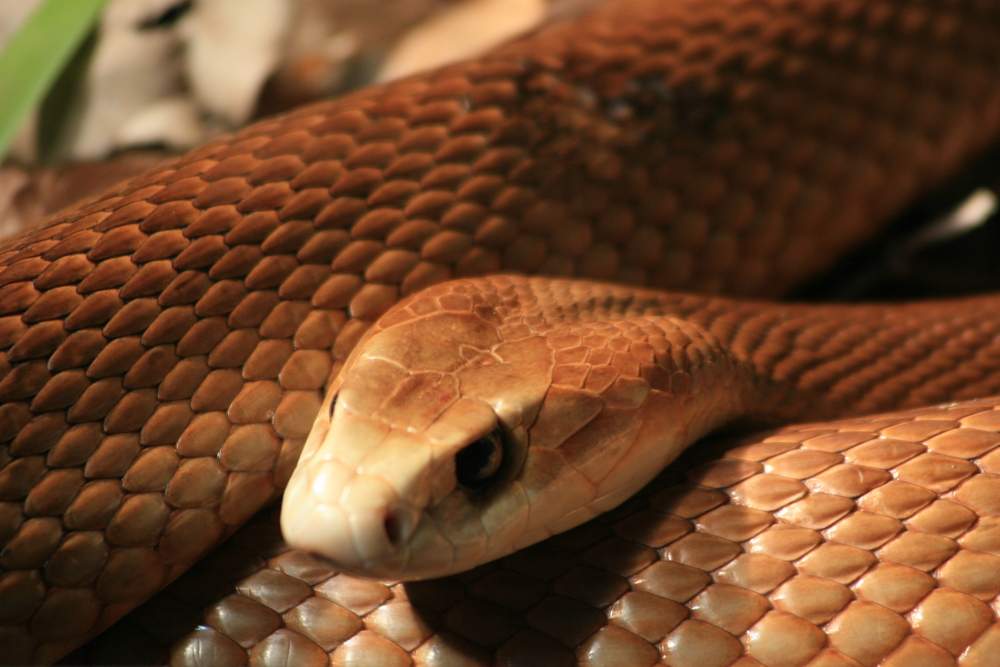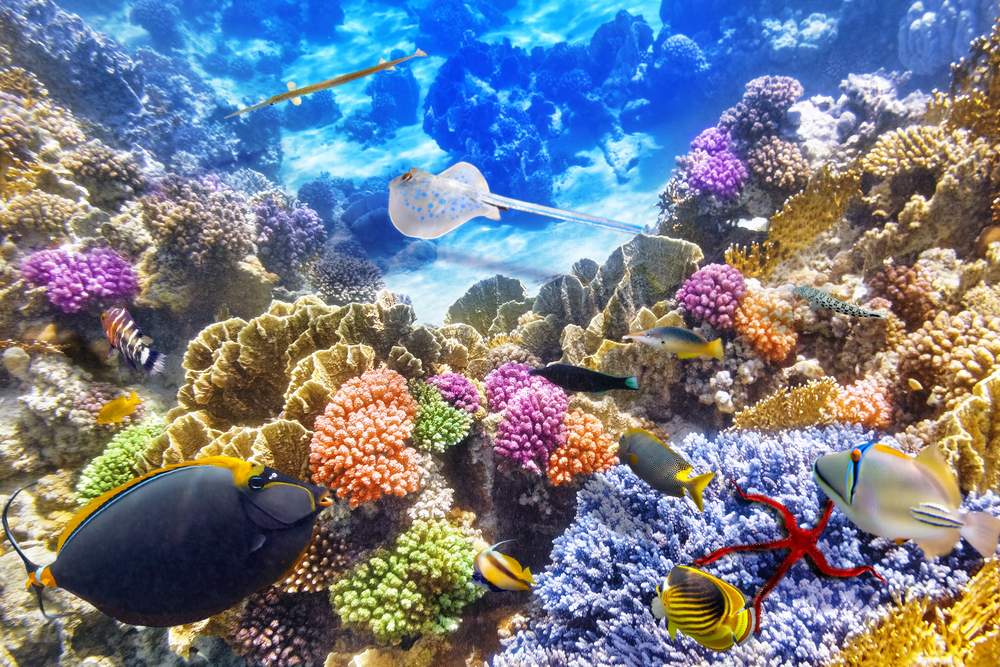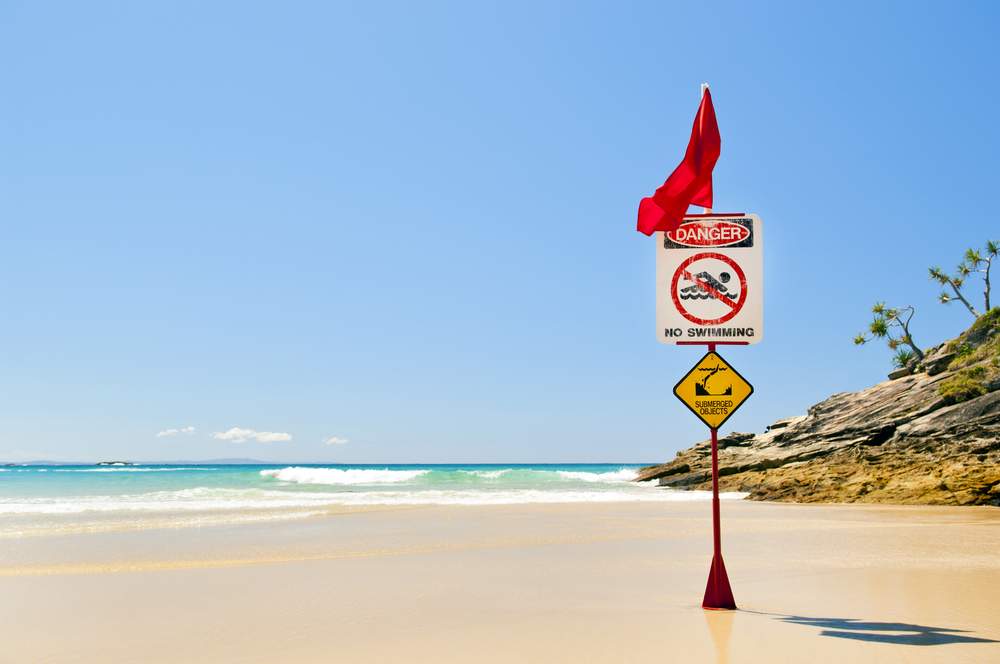When we finally arrived in Oz, I was told immediately not to go in the water, as it was the season for tiny jellyfish that will kill you within hours.
The inner and outer reefs are colorful playgrounds of marine life and vibrant underwater landscapes, but the creatures aren’t exactly friendly. The good news is that if you leave them alone, they most likely will leave you be as well. In order to have a safe and unforgettable experience, it’s well worth preparing for the unpredictable atmosphere of Tropical North Queensland, whether you plan to SCUBA dive the depths of the ocean, or hike through the rainforest.
Dangers on Land: Big & Small
Snakes & Spiders

Expert zoologists explained that snakes in Australia rarely bite or attack – and the ones who end up in the hospital are mostly drunk people, who are foolishly provoking the reptiles. Nearly 100,000 fatalities happen from snake bites every year – but only about three are in Australia, due to shy snakes and plenty of anti-venom available in clinics and hospitals.
The Thala Beach Nature Reserve and lodge, found just outside Port Douglas, in Cairns, is another place to get familiar with the wildlife and learn. While we were delighted to see the roaming kangaroos in the coconut farm, I was less than thrilled to discover a juvenile python laying across the front stoop of our cabin. Snakes are very common in tropical environments like these, but most are not deadly to humans, even if they are long, large and jarring to see unexpectedly. These are not venomous, nor really dangerous, but the snake was only one of many close encounters with wild animals we had during our stay.
Larger Creatures

If you’re camping on the coast, or even out for a day’s adventure, pay attention to the signs posted for the presence of crocodiles. Much of the coast of Queensland is home to crocs and they are a very real, and present, danger. The signs are there for a reason. Stay out of the water, and away from the edge.
Food
Several locals warned of not cleaning found food while bushwhacking or camping as people can get sick from pesticides, waste/dirt or simply having a weaker immune system not used to plants in the area.
If you do collect food, or bring your own, while outside, be aware of wild animals that can go after your supplies, like local bandicoots and dingoes. This might be your only interaction with marsupials and canines like these, as they tend to flee when feeling threatened. But that does not mean a sick or injured dingo won’t turn aggressive – and all might go after your food under the cover of nightfall. If you do see one, don’t run, rather stand facing the dingo with your arms folded to assert authority.
Protect Yourself at Sea

Jellyfish & Coral
Beaches will often have netting around the areas you can wade in, but even a few locals I talked to said they’d avoid swimming and stick to the pools. Just because the nets sometimes help deter jellyfish, it does not take away risks of crocodiles that congregate along the shorelines.
Hopefully you’ll heed the warnings and not try to stand on the coral either, but in case of an emergency these suits can protect from those types of stings as well. Digitate and fire coral are both found in the inner reef and can seriously inflame your ankles or arms by even a light brush up against the outer branches.
Fish & Tides
The same rules go for these animals as the ones on land – keep your distance. But trained tour professionals will instruct you how to enjoy the company of big fish and mammals properly. For instance, our tour brought bait to the same area every day, luring in several reef sharks and car tire-sized fish with very sharp teeth. But these animals know we’re not food and simply swim by the snorkelers if unprovoked. They cautioned us not to search for these reef dwellers on our own, or try to feed them by hand, of course.
If you plan a more in-depth diving adventure (or even just want to know more about Australia’s oceans), consider a class through Reef Teach, in Cairns. Professionally trained marine biologists are on hand to help educate the general public about the incredible marine life found in the reef and how to best approach a dive.
>> Book budget accommodations in Australia.
Overall Safety Strategies

- Always stay calm. Know that,99 times out of 100, nothing will happen when you encounter a wild animal.
- Control the situation as soon as possible. This might mean removing food, asserting authority through your body language or simply getting in your car and bouncing in a hurry.
- Seek medical attention. If you are bitten, stung or hurt in any way, get to a Dr. immediately.
- Package food properly. Store everything in smell-proof, airtight containers. Store food in RVs or campsites securely.
- Pack essentials to avoid illness and injury. This can include bug spray, sunblock, anti-venom, antibiotics and wound cleaning solution.
- Invest in safety equipment if planning to do dives and/or be outdoors often. Stinger suits for the reefs and sturdy hiking clothes/tents are helpful ways to avoid disaster.
- Do not eat anything found in the wild unless you are professionally trained to know it’s safe for human consumption.
- Stay educated. Do your research and ask questions. Get in touch with the Australian Marine Conservation Society or local dive/research groups. Choose reputable, sustainable tours and stay within your physical abilities.
Overall, I had never experienced such an incredibly diverse landscape so closely. It’s full of flora and fauna, so beautiful – and deadly. As with any place that has dangerous natural wonders, just be smart about what you’re doing. We escaped bodily harm while in Cairns, as do millions of travelers and locals every year.
Read more about Australia & the Great Barrier Reef: